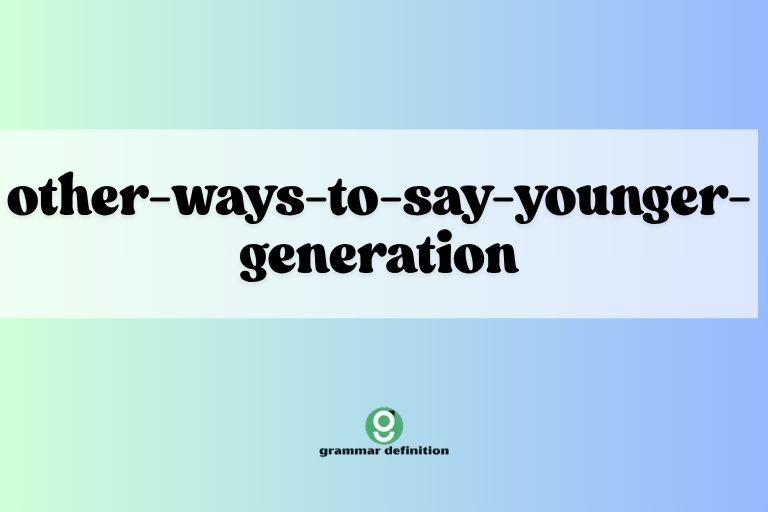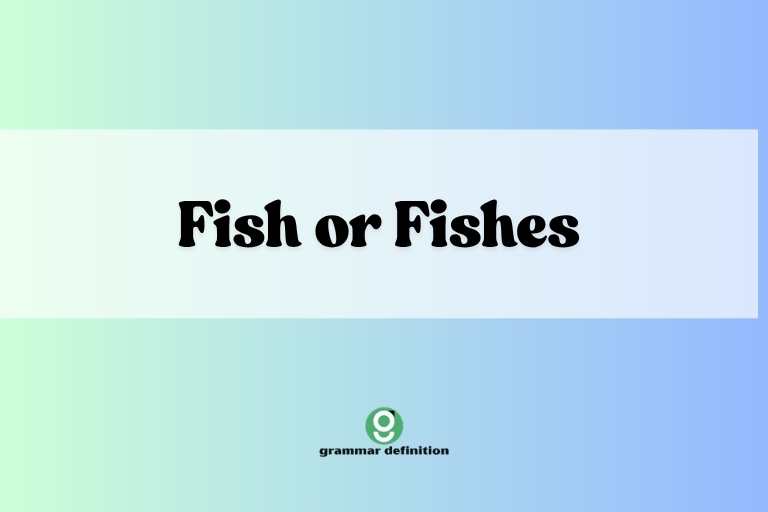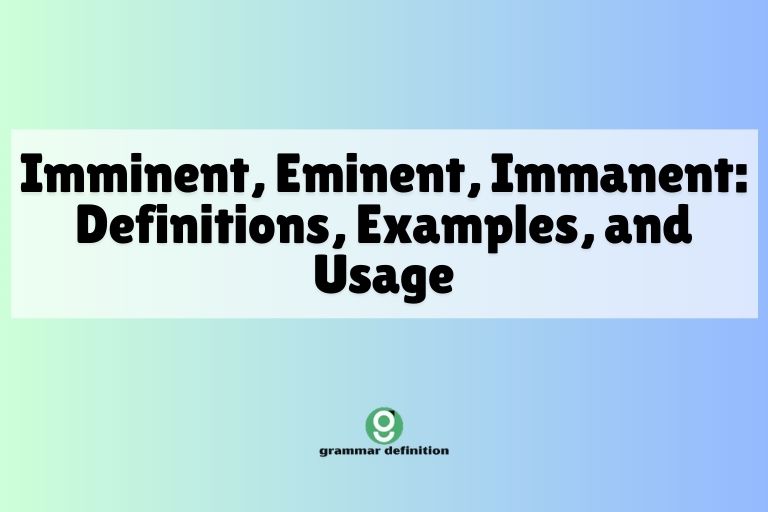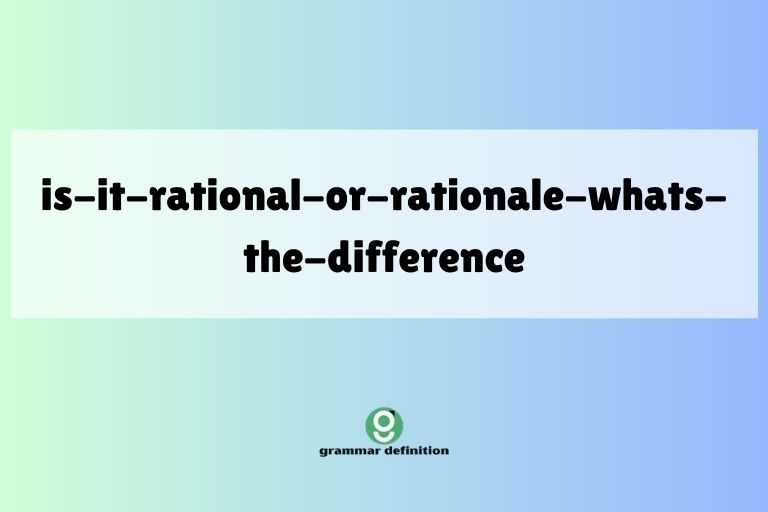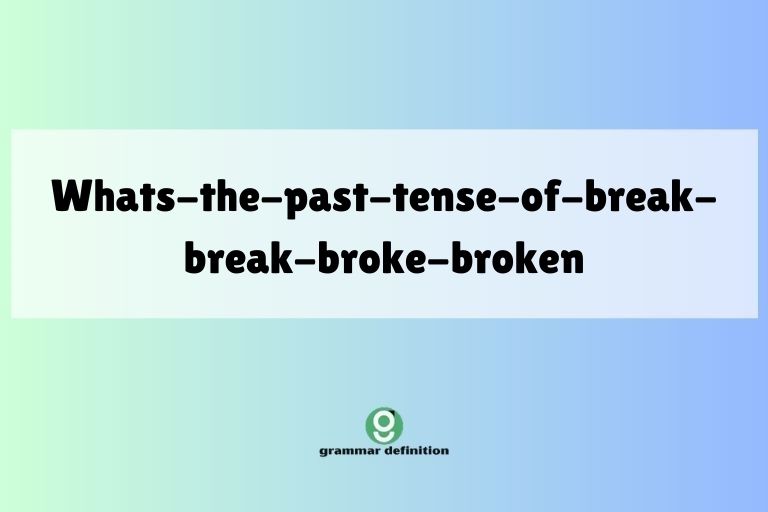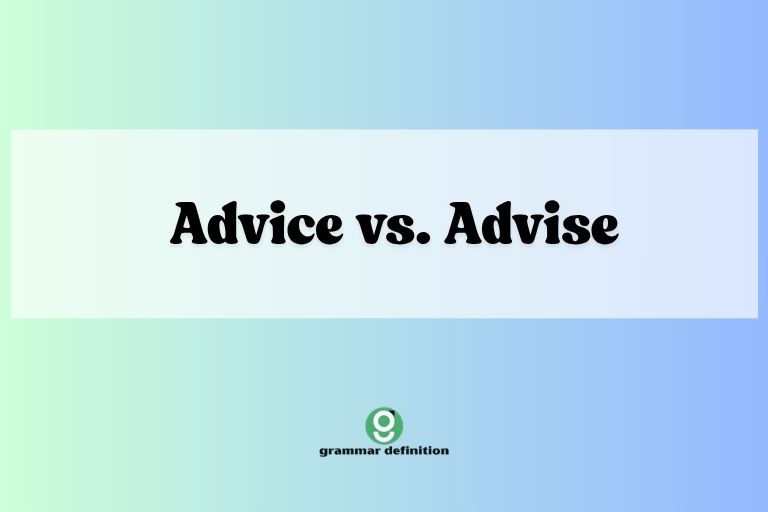Mastering the Colon: A Comprehensive Guide to Punctuation
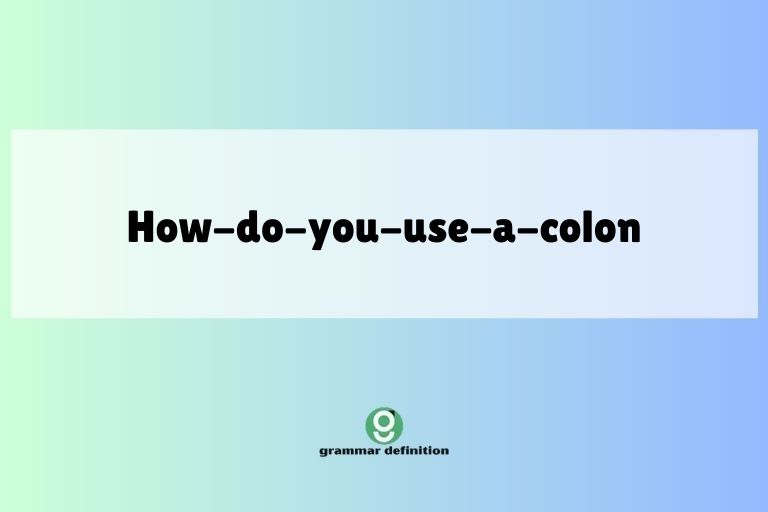
The colon, a seemingly simple punctuation mark, holds significant power in enhancing clarity and structure within your writing. Often overlooked, mastering its usage can elevate your prose from competent to compelling.
This article provides a comprehensive exploration of the colon, covering its definition, structural rules, various applications, and common pitfalls. Whether you are a student aiming for better grades, a professional seeking to improve communication, or simply someone passionate about language, this guide will equip you with the knowledge and skills to confidently and correctly use the colon.
Understanding the nuances of colon usage not only improves readability but also adds sophistication to your writing style. By learning to effectively employ the colon, you can create more impactful sentences, organize complex information, and guide your reader through your ideas with precision.
This article will break down the complexities into manageable segments, offering numerous examples and practical exercises to solidify your understanding.
Table of Contents
- Definition of a Colon
- Structural Breakdown
- Types of Colon Usage
- Examples of Colon Usage
- Usage Rules
- Common Mistakes
- Practice Exercises
- Advanced Topics
- FAQ
- Conclusion
Definition of a Colon
A colon (:) is a punctuation mark used to indicate a pause, often signaling that something is following, such as an explanation, a list, or a quotation. It essentially tells the reader, “Here comes something more.” The colon serves to connect related ideas within a sentence, creating a smooth transition and enhancing the overall flow of information.
Unlike a semicolon, which joins two independent clauses of equal weight, a colon introduces additional information that clarifies or expands upon the preceding clause.
The colon is classified as a punctuation mark of anticipation. It prepares the reader for what is about to come, whether it’s a detailed explanation, a comprehensive list, or a significant quotation.
Its function is primarily to establish a relationship between two parts of a sentence, where the second part provides additional context or detail to the first. The colon is versatile and can be used in various contexts, from formal academic writing to informal email communication.
Structural Breakdown
The basic structure involving a colon consists of an independent clause followed by a colon and then additional information. The independent clause before the colon must be able to stand alone as a complete sentence.
The information following the colon can be a word, a phrase, or another independent clause. While not mandatory, the clause following the colon is often related to the clause preceding it.
Here’s a breakdown of the common structural patterns:
- Independent Clause : List – The independent clause introduces a list of items.
- Independent Clause : Explanation – The independent clause makes a statement, and the following explanation clarifies it.
- Independent Clause : Quotation – The independent clause introduces a quotation.
- Independent Clause : Independent Clause – The second independent clause explains, illustrates, or expands on the first.
The clause after the colon is not always an independent clause, but the clause before the colon must always be independent. This is a crucial rule to remember when using colons effectively.
The colon acts as a bridge, connecting the initial thought with the subsequent elaboration, list, or quote.
Types of Colon Usage
The colon is a versatile punctuation mark with several distinct applications. Understanding these different types of usage will enable you to employ the colon with greater accuracy and confidence in your writing.
Introducing Lists
One of the most common uses of the colon is to introduce a list of items. The clause preceding the colon should clearly indicate that a list is about to follow.
This helps the reader anticipate the structure of the sentence and understand the relationship between the introductory clause and the list itself.
For example:
I need to buy several items at the grocery store: milk, eggs, bread, and cheese.
Explanation or Elaboration
The colon is also used to provide an explanation or elaboration of a statement made in the first part of the sentence. In this case, the second part of the sentence clarifies or expands upon the idea presented in the first part.
This usage is particularly effective for adding depth and detail to your writing.
For example:
She knew what she had to do: she had to tell the truth.
Introducing Quotations
When introducing a quotation, especially a longer one, a colon can be used to signal that the quoted material is about to follow. This is particularly useful when the quotation is formally introduced or when it is a significant part of the sentence.
For example:
The philosopher Descartes famously said: “I think, therefore I am.”
Separating Independent Clauses
A colon can be used to separate two independent clauses when the second clause explains, illustrates, or expands on the first. This usage is similar to that of a semicolon, but the colon indicates a stronger relationship between the two clauses.
For example:
The experiment failed: all the data was corrupted.
Time and Ratios
Colons are used to separate hours from minutes in time notation and to express ratios. This is a standard convention and should be followed for clarity and accuracy.
For example:
The meeting is scheduled for 2:30 PM.
The ratio of men to women in the class is 1:2.
Titles and Subtitles
Colons are commonly used to separate the main title of a book, article, or other work from its subtitle. This helps to provide a more detailed description of the content.
For example:
Pride and Prejudice: A Novel
Business Letters and Emails
In formal business letters and emails, a colon is often used after the salutation. This is a traditional convention and maintains a professional tone.
For example:
Dear Mr. Smith:
Examples of Colon Usage
To further illustrate the various uses of the colon, here are several examples categorized by function. These examples will help you understand the nuances of colon usage and how to apply them effectively in your writing.
Examples of Colons Introducing Lists
The following table provides examples of how to use a colon to introduce lists in various sentences. Each example showcases a different type of list, demonstrating the versatility of colon usage in this context.
These examples are designed to help you understand the proper placement and structure of colons when introducing lists.
| Example | Explanation |
|---|---|
| I need to pack a few essentials: a toothbrush, toothpaste, and a change of clothes. | The colon introduces a list of essential items for packing. |
| The recipe requires the following ingredients: flour, sugar, butter, and eggs. | The colon introduces a list of ingredients needed for the recipe. |
| She has three favorite hobbies: reading, hiking, and painting. | The colon introduces a list of the person’s favorite hobbies. |
| The company offers a variety of services: consulting, training, and project management. | The colon introduces a list of services offered by the company. |
| The store sells many types of fruit: apples, bananas, oranges, and grapes. | The colon introduces a list of fruits sold in the store. |
| To complete the assignment, you need to do the following: research the topic, write an outline, and draft the paper. | The colon introduces a list of steps required to complete the assignment. |
| The museum features artifacts from several ancient civilizations: Egypt, Rome, and Greece. | The colon introduces a list of ancient civilizations represented in the museum. |
| He always carries these items in his backpack: a notebook, a pen, and a water bottle. | The colon introduces a list of items he carries in his backpack. |
| The conference will cover several key topics: artificial intelligence, machine learning, and data analytics. | The colon introduces a list of key topics to be covered at the conference. |
| She enjoys watching different genres of movies: comedies, dramas, and thrillers. | The colon introduces a list of movie genres she enjoys. |
| The garden is filled with a variety of flowers: roses, tulips, daisies, and sunflowers. | The colon introduces a list of different types of flowers in the garden. |
| The team needs to focus on three main areas: communication, collaboration, and problem-solving. | The colon introduces a list of areas the team needs to focus on. |
| The software includes several useful features: data encryption, user authentication, and automatic backups. | The colon introduces a list of useful features included in the software. |
| The tour will take you to several famous landmarks: the Eiffel Tower, the Colosseum, and the Great Wall of China. | The colon introduces a list of famous landmarks to be visited on the tour. |
| The workshop will teach you various skills: time management, public speaking, and leadership. | The colon introduces a list of skills to be taught in the workshop. |
| The university offers a wide range of courses: mathematics, history, English, and science. | The colon introduces a list of courses offered by the university. |
| For the camping trip, we need to bring the following: a tent, sleeping bags, and cooking equipment. | The colon introduces a list of items needed for the camping trip. |
| The band plays a variety of musical styles: rock, pop, jazz, and blues. | The colon introduces a list of musical styles played by the band. |
| The project requires several steps: planning, execution, and evaluation. | The colon introduces a list of steps required for the project. |
| The company values these qualities in its employees: integrity, dedication, and teamwork. | The colon introduces a list of qualities valued by the company. |
| The doctor recommended a few lifestyle changes: regular exercise, a balanced diet, and sufficient sleep. | The colon introduces a list of lifestyle changes recommended by the doctor. |
| The study focused on several key factors: age, gender, and education level. | The colon introduces a list of key factors focused on in the study. |
| The presentation will cover three main points: the problem, the solution, and the benefits. | The colon introduces a list of main points to be covered in the presentation. |
| The restaurant offers a variety of cuisines: Italian, Mexican, and Chinese. | The colon introduces a list of cuisines offered by the restaurant. |
Examples of Colons Providing Explanations
The following table provides examples of how to use a colon to provide explanations in sentences. Each example demonstrates how the second part of the sentence clarifies or expands upon the idea presented in the first part, enhancing the depth and detail of the writing.
Understanding these examples will help you use colons effectively to explain or elaborate on your ideas.
| Example | Explanation |
|---|---|
| She knew what she had to do: she had to apologize. | The colon introduces the specific action she needed to take. |
| There was only one way to solve the problem: to start over from scratch. | The colon introduces the only solution to the problem. |
| He had a clear goal in mind: to win the championship. | The colon specifies the goal he was aiming for. |
| The evidence was overwhelming: he was guilty. | The colon explains the conclusion based on the evidence. |
| The reason for her success was simple: hard work and dedication. | The colon explains the reasons behind her success. |
| The team faced a significant challenge: a shortage of resources. | The colon explains the challenge the team was facing. |
| The company’s mission is clear: to provide high-quality products and services. | The colon explains the company’s mission. |
| He had only one regret: not spending more time with his family. | The colon specifies his only regret. |
| The key to a successful relationship is communication: open and honest dialogue. | The colon explains the key element for a successful relationship. |
| The city has a major problem: traffic congestion. | The colon explains the major problem the city faces. |
| She had one simple request: to be left alone. | The colon specifies her simple request. |
| There was only one thing left to do: to say goodbye. | The colon explains the final action to be taken. |
| The experiment yielded unexpected results: the compound changed color. | The colon explains the unexpected results of the experiment. |
| The book explores a complex theme: the nature of identity. | The colon explains the complex theme explored in the book. |
| The project had one main objective: to reduce carbon emissions. | The colon explains the main objective of the project. |
| He had a strong motivation: to make a difference in the world. | The colon explains his strong motivation. |
| The solution to the problem is straightforward: implement the new policy. | The colon explains the straightforward solution to the problem. |
| The film explores a controversial topic: the ethics of artificial intelligence. | The colon explains the controversial topic explored in the film. |
| The company’s success can be attributed to one thing: innovation. | The colon explains the main factor contributing to the company’s success. |
| He had a clear vision for the future: a world without poverty. | The colon explains his clear vision for the future. |
| The study revealed a surprising finding: the correlation between diet and mental health. | The colon explains the surprising finding revealed by the study. |
| The presentation focused on one central idea: the importance of sustainability. | The colon explains the central idea focused on in the presentation. |
| She offered a valuable piece of advice: always be yourself. | The colon introduces the valuable piece of advice she offered. |
| The problem is clear: a lack of funding. | The colon explains the clear problem. |
| His excuse was unbelievable: he overslept. | The colon explains the unbelievable excuse. |
Examples of Colons Introducing Quotations
The following table provides examples of using colons to introduce quotations. These examples demonstrate how to properly integrate quotations into your writing, using colons to seamlessly connect the introductory clause with the quoted material.
Understanding these examples will help you effectively use colons when incorporating quotations into your work.
| Example | Explanation |
|---|---|
| The philosopher Kant famously stated: “Dare to know!” | The colon introduces a famous quote by Kant. |
| Shakespeare wrote: “All the world’s a stage.” | The colon introduces a well-known quote from Shakespeare. |
| As Einstein once said: “Imagination is more important than knowledge.” | The colon introduces a quote by Einstein. |
| The author began the chapter with these words: “The journey had just begun.” | The colon introduces the opening words of the chapter. |
| The sign read: “Do not enter.” | The colon introduces the text displayed on the sign. |
| The witness testified: “I saw the whole thing.” | The colon introduces the witness’s testimony. |
| The email stated: “Your application has been approved.” | The colon introduces the statement from the email. |
| The doctor advised: “Get plenty of rest.” | The colon introduces the doctor’s advice. |
| The article highlighted: “Climate change is a global crisis.” | The colon introduces a key point highlighted in the article. |
| The teacher announced: “There will be a quiz tomorrow.” | The colon introduces the teacher’s announcement. |
| The politician declared: “We will fight for justice.” | The colon introduces the politician’s declaration. |
| The advertisement claimed: “This product will change your life.” | The colon introduces the claim made in the advertisement. |
| The poem began with the line: “The sun rises in the east.” | The colon introduces the opening line of the poem. |
| The report concluded: “Further research is needed.” | The colon introduces the conclusion of the report. |
| The manager emphasized: “Teamwork is essential for success.” | The colon introduces the manager’s emphasis. |
| The slogan stated: “Think different.” | The colon introduces the slogan. |
| The instructions read: “Press the red button.” | The colon introduces the instructions. |
| The note said: “I’ll be back soon.” | The colon introduces the message on the note. |
| The lyrics proclaimed: “We are the champions.” | The colon introduces the lyrics of a song. |
| The professor lectured: “Knowledge is power.” | The colon introduces the professor’s lecture. |
| The general ordered: “Attack at dawn.” | The colon introduces the general’s order. |
| The prophet wrote: “The end is near.” | The colon introduces the prophet’s writing. |
| The critic stated: “The movie was a masterpiece.” | The colon introduces the critic’s statement. |
| The song declared: “Love is all you need.” | The colon introduces the song’s declaration. |
| The proverb says: “Honesty is the best policy.” | The colon introduces the proverb. |
Usage Rules
To use colons correctly, it’s essential to follow certain rules. These rules ensure clarity and consistency in your writing, preventing potential misunderstandings and enhancing the overall quality of your communication.
- Independent Clause Before the Colon: The clause before the colon must always be an independent clause, meaning it can stand alone as a complete sentence.
- Capitalization After the Colon: If the clause following the colon is an independent clause, it is generally capitalized. If it is a list or a phrase, it is usually not capitalized, unless it contains proper nouns.
- Consistency in Lists: When introducing a list, ensure that the items in the list are grammatically consistent. For example, all items should be nouns or noun phrases.
- Avoid Overuse: While colons are useful, avoid overusing them. Too many colons in a piece of writing can make it seem disjointed and difficult to read.
- Clarity and Relevance: The information following the colon should always be clearly related to the information preceding it. The colon should serve to connect related ideas, not to introduce unrelated information.
Following these usage rules will help you employ colons effectively and accurately in your writing, ensuring that your ideas are communicated clearly and precisely.
Common Mistakes
Even experienced writers sometimes make mistakes when using colons. Recognizing these common errors can help you avoid them in your own writing and improve your overall punctuation skills.
Here are some common mistakes and how to correct them:
| Incorrect | Correct | Explanation |
|---|---|---|
| I need: milk, eggs, and bread. | I need the following items: milk, eggs, and bread. | The clause before the colon should be a complete sentence. |
| She enjoys: to read, to hike, and to swim. | She enjoys the following activities: reading, hiking, and swimming. | The items in the list should be grammatically consistent. |
| The reason is: because I was tired. | The reason is this: I was tired. | Avoid using “because” directly after a colon. |
| She visited Paris: London, and Rome. | She visited: Paris, London, and Rome. | The introductory phrase should lead naturally into the list. |
| He said: “I am happy”. | He said: “I am happy.” | The punctuation should be inside the quotation marks. |
| The result was: a failure. | The result was a failure. | A colon is unnecessary when the phrase after “was” is a simple predicate nominative. |
| I love all kinds of music, for example: pop, rock and classical. | I love all kinds of music, for example: pop, rock, and classical. | Remove the comma before “for example” to ensure the sentence flows smoothly. |
| He wanted to visit many places: such as Italy, France, and Spain. | He wanted to visit many places: Italy, France, and Spain. | Remove the “such as” before the list to maintain a proper colon usage. |
By being aware of these common mistakes and understanding how to correct them, you can ensure that you are using colons accurately and effectively in your writing.
Practice Exercises
To solidify your understanding of colon usage, complete the following practice exercises. These exercises will test your ability to correctly use colons in various contexts.
Each question requires you to either add a colon where it is needed or correct a sentence where a colon is used incorrectly. Answers are provided at the end of the section.
Exercise 1: Add Colons Where Needed
- I need to buy three things at the store milk, bread, and eggs.
- She knew what she had to do she had to leave.
- The recipe calls for the following ingredients flour, sugar, and butter.
- He had one goal in mind to win the race.
- The sign read Warning wet paint.
- The meeting is scheduled for 3 30 PM.
- She visited three cities Paris, Rome, and London.
- The reason was simple he was tired.
- The email said Your application has been approved.
- He packed the essentials toothbrush, toothpaste, and a comb.
Exercise 2: Correct the Sentences
- I need: milk, eggs and cheese.
- She enjoys: reading, hiking, and swimming.
- The reason is: because I was late.
- He said: “I am happy”.
- The result was: a success.
- For example: apples, bananas, and oranges are fruits.
- She needed: a pen, paper, and a notebook.
- He wanted: to travel the world, to meet new people and to learn about different cultures.
- These are my favorite colors: blue, green, and red.
- The office was closed: due to the weather.
Exercise 3: Fill in the Blanks
Complete the following sentences by adding a clause after the colon that explains or elaborates on the first clause.
- The project was a success: __________________________________.
- She had a difficult decision to make: __________________________.
- His excuse was unbelievable: ________________________________.
- The city is known for its vibrant culture: _____________________.
- He had a clear vision: _____________________________________.
- The experiment yielded surprising results: ____________________.
- The company’s mission is straightforward: ____________________.
- She offered a valuable piece of advice: _______________________.
- The problem is clear: ______________________________________.
- His response was unexpected: _______________________________.
Answers to Practice Exercises
Exercise 1: Add Colons Where Needed
- I need to buy three things at the store: milk, bread, and eggs.
- She knew what she had to do: she had to leave.
- The recipe calls for the following ingredients: flour, sugar, and butter.
- He had one goal in mind: to win the race.
- The sign read: Warning wet paint.
- The meeting is scheduled for 3:30 PM.
- She visited three cities: Paris, Rome, and London.
- The reason was simple: he was tired.
- The email said: “Your application has been approved.”
- He packed the essentials: toothbrush, toothpaste, and a comb.
Exercise 2: Correct the Sentences
- I need the following: milk, eggs, and cheese.
- She enjoys the following activities: reading, hiking, and swimming.
- The reason is this: I was late.
- He said: “I am happy.”
- The result was a success.
- For example, apples, bananas, and oranges are fruits.
- She needed the following: a pen, paper, and a notebook.
- He wanted the following: to travel the world, to meet new people, and to learn about different cultures.
- These are my favorite colors: blue, green, and red.
- The office was closed due to the weather.
Exercise 3: Fill in the Blanks (Example Answers)
- The project was a success: it exceeded all expectations.
- She had a difficult decision to make: whether to stay or leave.
- His excuse was unbelievable: he claimed a dog ate his homework.
- The city is known for its vibrant culture: its music, art, and food.
- He had a clear vision: a world without poverty or hunger.
- The experiment yielded surprising results: the substance glowed in the dark.
- The company’s mission is straightforward: to provide excellent customer service.
- She offered a valuable piece of advice: always be true to yourself.
- The problem is clear: a lack of funding.
- His response was unexpected: he burst into tears.
Advanced Topics
For advanced learners, there are some nuances and complexities in colon usage that are worth exploring. These topics delve into more subtle aspects of punctuation and style, allowing you to refine your writing skills even further.
- Colons in Complex Sentences: Using colons effectively in longer, more complex sentences requires careful attention to structure and clarity. Ensure that the relationship between the clauses is clear and that the colon enhances the overall flow of the sentence.
- Colons with Other Punctuation Marks: Understanding how colons interact with other punctuation marks, such as commas, semicolons, and dashes, is essential for creating polished and professional writing.
- Stylistic Choices: In creative writing, colons can be used for stylistic effect, such as creating emphasis or adding a dramatic pause. However, it’s important to use this technique sparingly and with intention.
- Colons in Academic Writing: Academic writing often requires precise and formal language. Colons can be used to introduce definitions, explanations, and examples, enhancing the clarity and rigor of your arguments.
Exploring these advanced topics will enable you to use colons with greater sophistication and precision, enhancing the overall quality and impact of your writing.
FAQ
Here are some frequently asked questions about colon usage, along with detailed answers to help clarify any remaining confusion.
- Q: Is it necessary to capitalize the first word after a colon?
A: It depends. If what follows the colon is an independent clause, you typically capitalize the first word. If it’s a list or a phrase, capitalization is usually not necessary unless it contains proper nouns. For example: “The solution is clear: We need more funding.” But: “I need to buy: milk, eggs, and bread.” - Q: Can I use a colon after “such as” or “for example”?
A: No, it is generally incorrect to use a colon after “such as” or “for example.” These phrases already indicate that a list or example is about to follow, making the colon redundant. Instead, you should use a comma or simply omit any punctuation. For example: “I enjoy many fruits, such as apples, bananas, and oranges.” - Q: How is a colon different from a semicolon?
A: A colon is used to introduce an explanation, list, or quotation, while a semicolon is used to join two related independent clauses. A semicolon implies a closer relationship between the clauses than a period would, but it doesn’t introduce additional information in the same way a colon does. Think of a colon as saying, “Here comes more information about that,” while a semicolon says, “Here’s another thought related to that.” - Q: Can I use a colon to introduce a short quotation?
A: Yes, you can use a colon to introduce a short quotation, especially if it is formally introduced or if it is a significant part of the sentence. However, for very short or informal quotations, a comma may be more appropriate. For example: “He simply said: ‘Hello.'” Or: “He simply said, ‘Hello.'” - Q: Can a colon be used at the end of a paragraph?
A: While it is technically possible to use a colon at the end of a paragraph if it introduces a list or explanation that continues into the next paragraph, it is generally not recommended. It can create a disjointed effect and may be confusing for the reader. It is usually better to restructure the paragraph to avoid this. - Q: Is it okay to use multiple colons in one sentence?
A: While it is technically possible, using multiple colons in one sentence is generally discouraged. It can make the sentence complex and difficult to read. It is usually better to break the sentence into multiple shorter sentences or to rephrase it to avoid the need for multiple colons. - Q: What should I do if the list after a colon consists of full sentences?
A: If the list after a colon consists of full sentences, each sentence should start with a capital letter and end with appropriate punctuation (period, question mark, or exclamation point). This ensures that each item in the list is clearly delineated and that the overall structure of the sentence is easy to follow. - Q: How can I ensure that I’m using colons correctly in my writing?
A: The best way to ensure that you are using colons correctly is to practice and to review your writing carefully. Pay attention to the rules of colon usage, and ask yourself whether the colon is truly necessary and whether it enhances the clarity and flow of your writing. Also, consider using online grammar tools or asking a friend or colleague to proofread your work.
Conclusion
Mastering the colon is a crucial step in refining your writing skills. This punctuation mark, when used correctly, can significantly enhance the clarity, structure, and impact of your prose.
By understanding its definition, structural rules, various applications, and common pitfalls, you can confidently and effectively incorporate colons into your writing.
Remember to always ensure that the clause before the colon is an independent clause and that the information following the colon is clearly related to the preceding clause. Avoid overuse and be mindful of the stylistic choices you make.
With practice and careful attention to detail, you can master the colon and elevate your writing to new heights. Keep practicing with the exercises and examples provided, and don
‘t hesitate to consult grammar resources or seek feedback from others to further refine your skills.
Happy writing!

